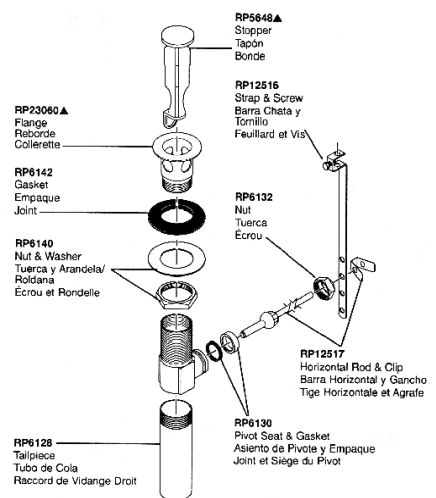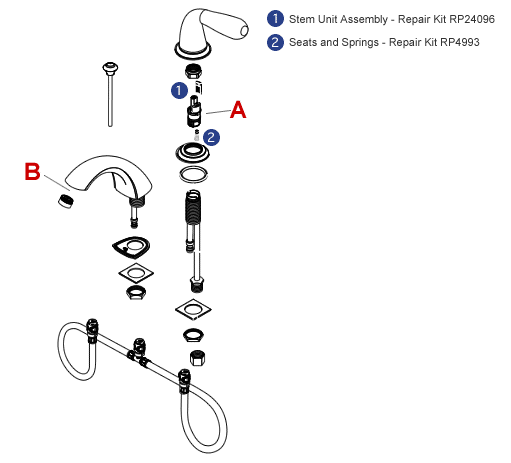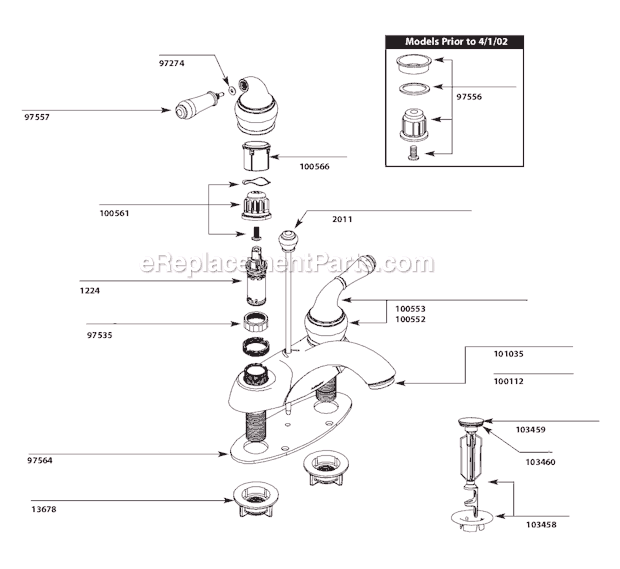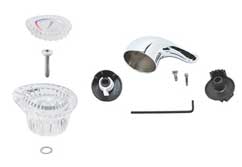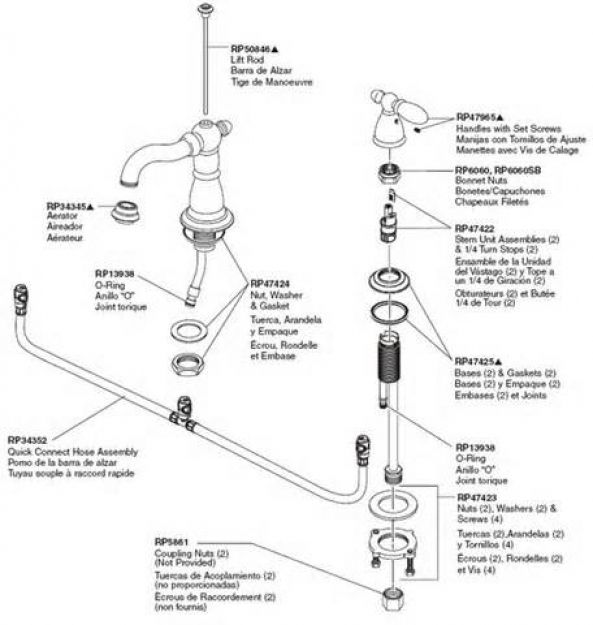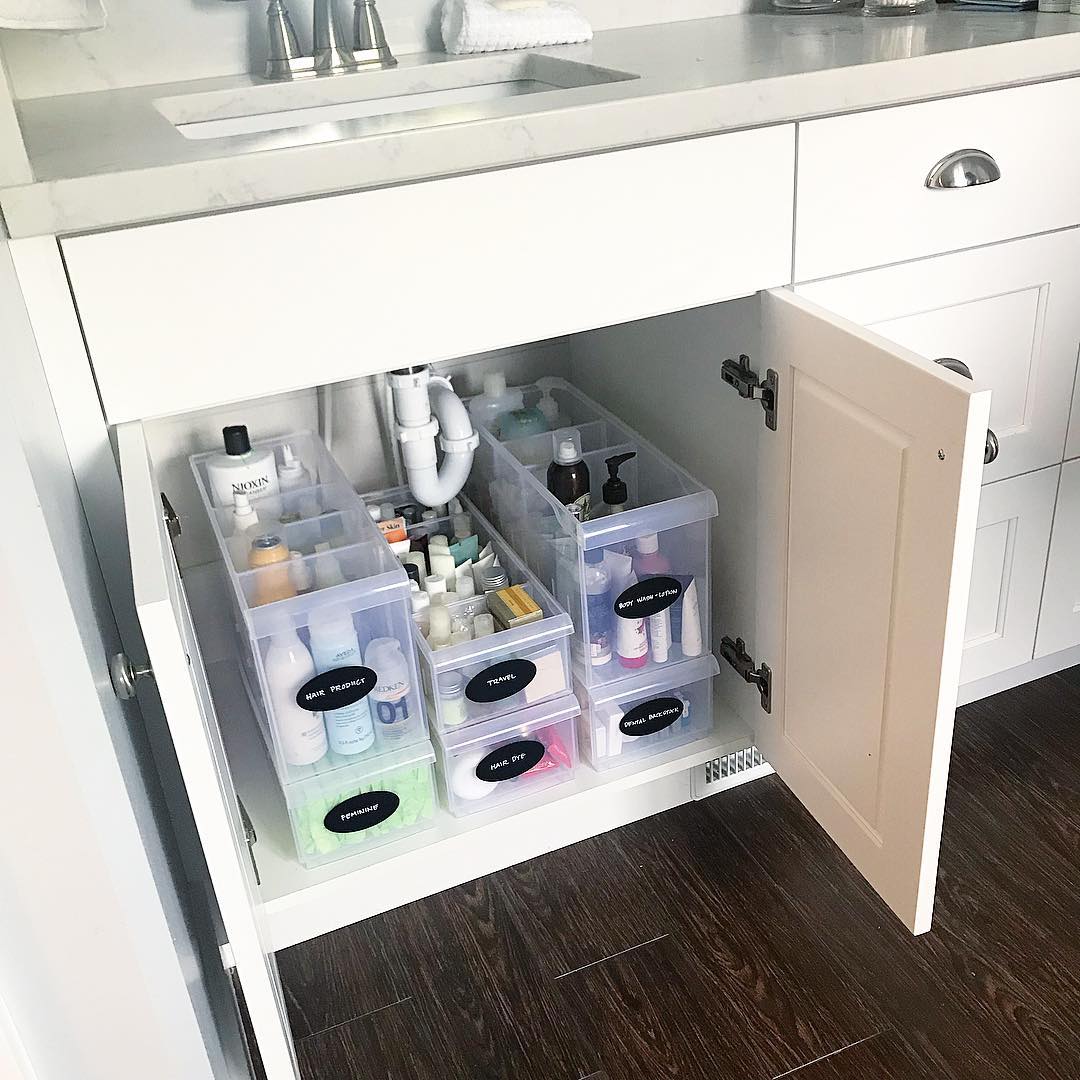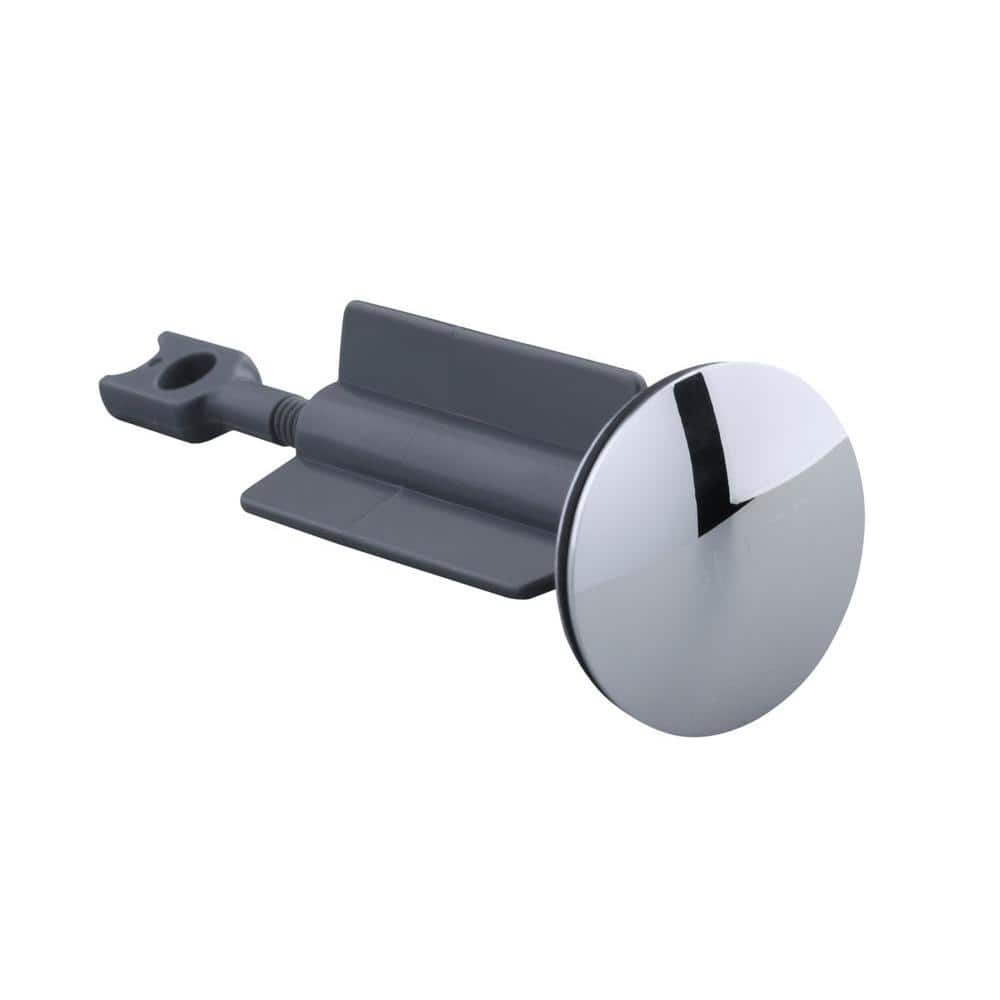Understanding the Different Types of Bathroom Sink Replacement Parts
Let’s discuss the various types of bathroom sink replacement parts:
- Faucets: The faucet is one of the most crucial components of a bathroom sink. There are various types of faucets available, including single-handle, double-handle, and touchless options. Each type offers its own set of features and benefits, so it’s important to choose one that suits your needs and preferences.
- Drains and Stoppers: The drain and stopper are responsible for controlling the flow of water in your sink. There are different types of drains, such as pop-up drains and grid drains, each with its own mechanism for opening and closing. Stoppers, on the other hand, come in various designs and materials, such as rubber or metal.
- P-traps: The P-trap is a curved pipe that connects the sink drain to the main plumbing line. Its primary function is to prevent sewer gases from entering your bathroom. P-traps are available in different sizes and materials, including plastic and metal, and they can be easily replaced if damaged or worn out.
- Handles and Knobs: Handles and knobs are used to control the water flow and temperature in your bathroom sink. They come in a variety of designs and finishes, such as chrome, brass, or nickel, allowing you to match them with the overall style of your bathroom.
- Cartridges and Valves: Cartridges and valves are essential parts of the faucet mechanism. They control the water flow and ensure smooth operation. There are different types of cartridges and valves, such as ceramic disc cartridges and compression valves, each offering its own advantages in terms of durability and ease of use.
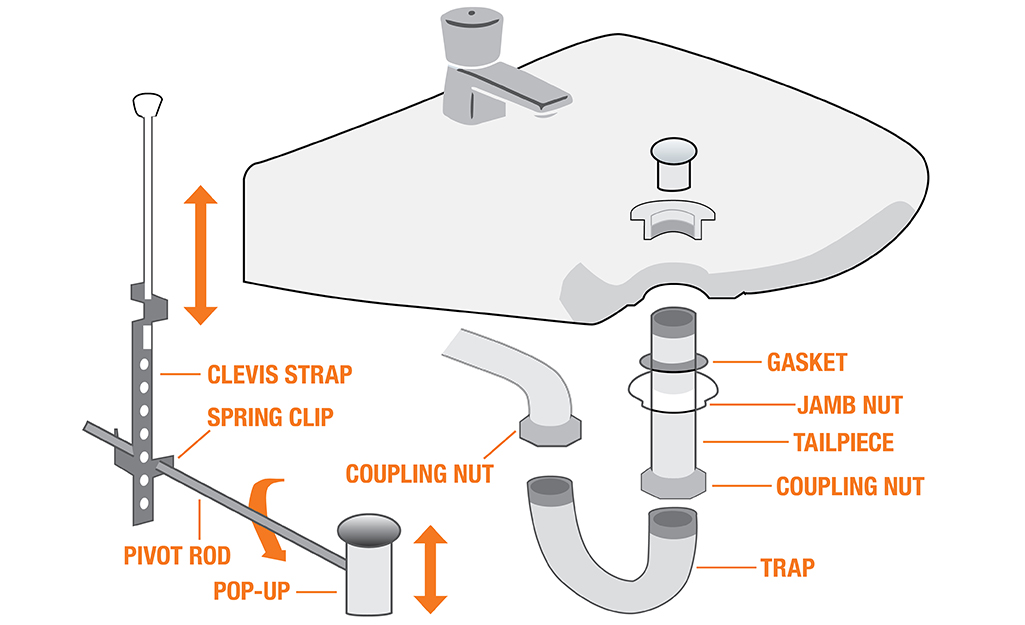
Essential Tools and Materials for Replacing Bathroom Sink Parts
Wrenches: A set of adjustable wrenches is essential for loosening and tightening nuts and bolts during the replacement process. Make sure to have both a small and large wrench to accommodate different sizes of fittings.
Screwdrivers: Screwdrivers are necessary for removing screws and other fasteners. It’s advisable to have both a flat-head and a Phillips-head screwdriver to cover all types of screws commonly found in bathroom sink parts.
Plumber’s Tape: Plumber’s tape, also known as Teflon tape, is used to create a watertight seal between threaded fittings. Apply a few wraps of plumber’s tape clockwise around the threads to prevent leaks.
Pipe Wrench: A pipe wrench is a specialized tool used for gripping and turning pipes. It comes in handy when removing and installing P-traps or other pipe connections.
Replacement Parts: Before starting the replacement process, make sure you have the necessary replacement parts on hand. This may include faucets, drains, stoppers, cartridges, or any other specific parts needed for your bathroom sink.
Step-by-Step Guide to Replacing a Faucet in Your Bathroom Sink
Turn Off the Water Supply: Before starting any work, shut off the water supply to your bathroom sink. Locate the shut-off valves underneath the sink and turn them clockwise until they are fully closed.
Remove the Old Faucet: Disconnect the water supply lines from the faucet using a wrench. Then, remove any nuts or bolts securing the faucet to the sink. Carefully lift the old faucet out and set it aside.
Prepare the New Faucet: Read the manufacturer’s instructions for your new faucet to ensure proper installation. Assemble any necessary parts, such as handles or cartridges, according to the instructions.
Install the New Faucet: Position the new faucet in the sink and secure it in place using the provided nuts or bolts. Connect the water supply lines to the appropriate valves using a wrench. Make sure all connections are tight.
Test for Leaks: Turn on the water supply and check for any leaks around the faucet and connections. If you notice any leaks, tighten the connections further or apply plumber’s tape to create a better seal.
Finishing Touches: Reattach any decorative caps or escutcheons that came with your faucet. Clean the sink thoroughly and remove any debris or excess sealant. Enjoy your new faucet!
Troubleshooting Common Issues with Bathroom Sink Drains and Stoppers
Slow Drainage: If your bathroom sink is draining slowly, it could be due to a clog in the drainpipe. Try using a plunger or a drain snake to remove the obstruction. If the problem persists, you may need to remove the P-trap and clean it.
Leaking Drainpipe: A leaking drainpipe can cause water to pool underneath your sink. Inspect the connections between the drainpipe and the sink, as well as the P-trap. Tighten any loose connections or replace worn-out washers.
Stuck or Broken Stopper: If your sink stopper is stuck or broken, it may need to be replaced. Remove the stopper assembly by unscrewing or unclipping it from the drain. Purchase a suitable replacement and install it according to the manufacturer’s instructions.
Foul Odors: Persistent foul odors coming from your sink may indicate a buildup of debris or bacteria in the drainpipe. Regularly clean your sink drain using a mixture of baking soda and vinegar. You can also use a commercial drain cleaner or contact a professional plumber for assistance.
Gurgling Sounds: Gurgling sounds coming from the drain can be a sign of a partially blocked vent stack or a clogged drainpipe. In some cases, this may require professional help to diagnose and fix the issue. Contact a plumber if the gurgling persists.
Exploring Modern and Stylish Replacement Options
Vessel Sinks: Vessel sinks sit on top of the countertop, creating a striking visual impact. They come in various shapes, sizes, and materials, such as glass, porcelain, or stone. Vessel sinks are a popular choice for adding a contemporary touch to bathrooms.
Wall-Mounted Sinks: Wall-mounted sinks are a space-saving option that provides a clean and minimalist look. They are mounted directly on the wall, freeing up floor space and making cleaning easier. Wall-mounted sinks are ideal for smaller bathrooms or modern design aesthetics.
Pedestal Sinks: Pedestal sinks consist of a basin that sits on a decorative pedestal, giving a classic and elegant appearance. They are a timeless choice that works well in both traditional and modern bathroom styles.
Undermount Sinks: Undermount sinks are installed beneath the countertop, creating a seamless and sleek look. They are easy to clean and maintain since there is no lip or rim to collect dirt or grime. Undermount sinks are a popular choice for contemporary and minimalist designs.
Smart Sinks: Smart sinks are a modern innovation that incorporates advanced technology into bathroom fixtures. They can include features such as touchless faucets, built-in LED lighting, temperature control, and even voice command functionality. Smart sinks offer convenience and a futuristic touch to your bathroom.
Moen Bathroom Faucet 4551 eReplacementParts.com
Bathroom Sink u0026 Faucet Parts Riverbend Home
Bathroom Sink Drain Parts Diagram , , http://www.designbabylon
Related Posts:
- How To Paint Bathroom Sink Countertop
- Bathroom Sink Clogged With Hair
- Bathroom Sink Pedestal Storage
- Ebay Bathroom Sink Taps
- Bathroom Sink Leaking At Base
- Bathroom Sink Drain Leaking Underneath
- Bathroom Sink Backing Up
- Bathroom Sink Drain Height From Floor
- Bathroom Sink Faucet Stems
- Bathroom Sink Water Lines

